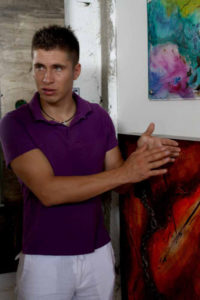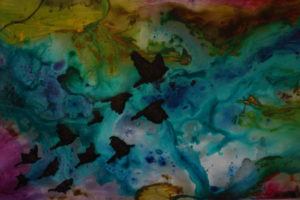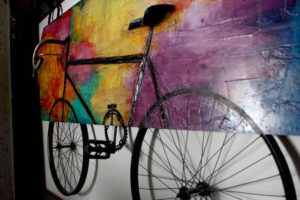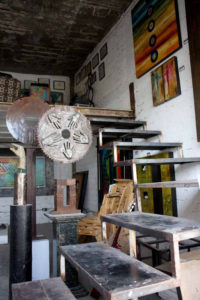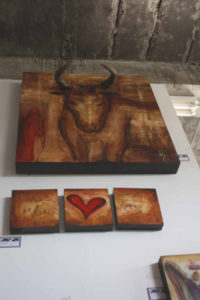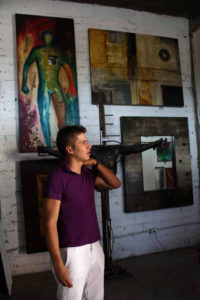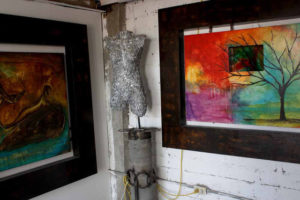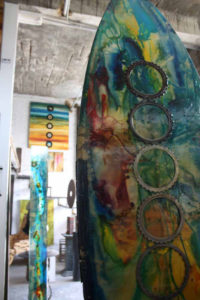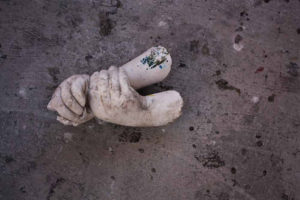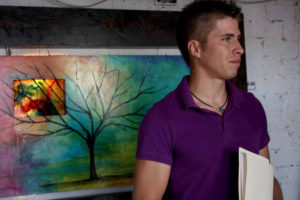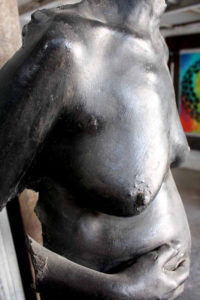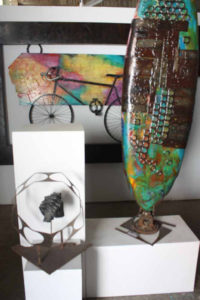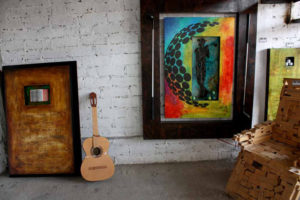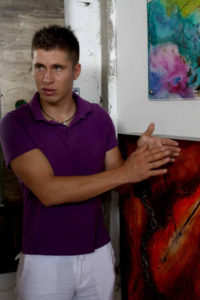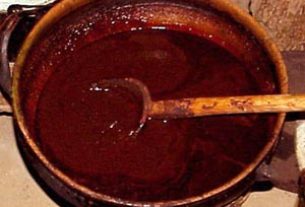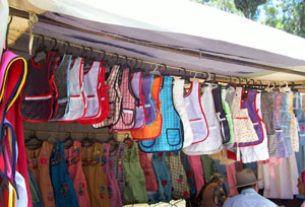Photo Gallery
There’s a quiet elegance that engulfs San Jose del Cabo, which sits on the Sea of Cortes in Baja California Sur.
Oh, it has plenty of hustle, as does any Mexican turista destination, with vendors offering “amigo prices” to passersby, trying to lure them into their shops with claims that today, the bracelets, necklaces and tee-shirts are “almost free.”
But, there’s not as much bustle in San Jose as there is in Cabo San Lucas, the town’s noisy neighbor about 20 miles southwest.
Perhaps that’s why it is, again, becoming a popular artistic enclave.
Hemingway and Steinbeck once walked the streets of San Jose del Cabo, their prose inspired by the poetry of the little community where, nearly 200 years ago, a group of Mexican soldiers defeated U.S. marines stationed aboard the U.S.S. Portsmouth during one of the bloodiest battles of the Mexican-American War. It was, later, known as a fishing village when the giant tuna were even more plentiful than today and the canneries were in operation in the region.
But, now, it is different.
Instead of being a place where the Pescadores would take to the sea to chase those giant tuna, it is now a place where artists and writers come to chase their muse.
This isn’t a typical port of call for tourists. You won’t find a velvet Elvis painting anywhere, no matter how hard you look. In fact, that American Express card had better have a high limit if you care to make an art purchase in San Jose del Cabo because this has become a haven for world-class art.
Most of the galleries can be found along Calle Obregon, which runs alongside the old Mision de San Jose del Cabo Anuiti Catholic Church. Others dot the walkways around the town plaza.
These, are old, narrow streets, pretty much the same as they were when Hemingway and Steinbeck walked them, except for fresh coats of paint on the historic adobe buildings.
Inside those buildings, however, there is magic.
Next to the authentic restaurants and little cantinas, there are world-class art galleries, where sculptures, castings, oils and many forms of cutting-edge art are on display.
This is the San Jose del Cabo Art District and as autumn breathes its comforting calm after a torrid summer, the artists are preparing for another season of the popular Art Walk.
“It started in 2001 with three or four galleries getting together and passing out pamphlets to draw people to their businesses,” says Patricia Mendoza who presides over the Art Walk. About five years later, it began to shape itself into what it is today — a weekly event with more than 20 galleries, food, and music. There’s also a lot of free tequila and wine tasting in the local shops. The galleries stay open until 9 p.m. and, usually, at least 800 people — a mixture of tourists and community members — crowd the little section of town and meander.
“It’s been really successful,” Mendoza says. “The money people spend here at our restaurants and shops makes it the most important event in San Jose del Cabo.”
Mendoza said so many people are becoming accustomed to visiting the Art Walk that even when the official season is over, the Thursday-night crowd still keeps coming.
And, so do the artists.
One of the new talents to move to the growing artist’s colony in San Jose del Cabo is Ivan Guaderrama, a gentle, slender 26-year-old with flashing green eyes who was born in Cuauhtemoc City, Mexico, and educated in the United States.
Mendoza is an admirer. She often exhibits his work in her gallery.
“He’s really good,” she says. “We had a show with him last October and sold most of his pieces. He is constantly in the local exhibitions and has exhibited in Mexico City and San Carlo museums. He is a very important young artist.”
Guaderrama opened his first gallery, “Criticas de Arte Galería,” in Chihuahua, Mexico in 2007, where he showed his initial works.
Fresh out of school, he experimented with different resins and paints, elements that he crafted into his work. He also explored different media.
When his mother and brother came from the United States to visit his new gallery, Guaderrama decided he wanted something more meaningful than a photograph to commemorate the occasion, so he had the three of them grasp hands and he made a casting of it, which he then turned into an acrylic, life-sized statue.
Not long after he put the piece up in his studio, a pregnant woman came in, asking for a creative way to document her pregnancy. Guaderrama suggested a body casting.
“It was of her body from the neck to her lower belly,” he said softly. “Two years later, she came back with her little daughter. ‘You remember you did that (casting)?’ she said. It was very emotional.”
Emotion and passion fill his work, whether he is doing a body casting, painting hearts — a newfound strain of his work — or gently turning old, broken music instruments into pieces of art.
“If you want to do something very well, you have to be passionate about it,” he says.
He came to San Jose del Cabo in 2010 for a vacation.
He says he loved the weather, a pleasant change from the soaring heat and humidity of the mainland, and fell in love with surfing.
“I would spend all day sweating in my studio (in Chihuahua),” he explains. “When I came here, it was less humid, which helps with my materials, and I really love the weather, really love the beach. I saw the surfers. It was all so beautiful, the energy, the wind. Sometimes in a big city, everybody is always running, nobody listens to you. I wanted some time for me.”
So he packed his paints, materials and easels and moved to a two-story studio that sits at the top of Calle Obregon in San Jose del Cabo.
The entryway is filled with his latest pieces — rich, lush hearts on one side, antique musical instruments converted into art on the other. There’s a loft where he tends to the business end of the gallery and a workshop in the back.
Guaderrama’s hearts bear a striking likeness to those of Peter Max, whose iconic, psychedelic works captured the mood and movement of the hippies in the 1960s.
When asked about the similarity, Guaderrama is sheepish as he reveals that is he unfamiliar with Max’s work.
“The hearts? Love is the key, it’s all about hearts and love,” he explains. “The heart part? It started when I came here.”
Music has been a powerful influence on Guaderrama’s work. Besides remaking old, broken down guitars and horns into gallery pieces, he also works at times with local musicians, putting on live shows where he uses fluorescent paints under a black light, splashing and brushing them across a canvas while musicians perform in the background.
“If I could have a third eye, it would be music,” he confides. “If I wasn’t an artist, I would, for sure, be a musician. Before I took my first art class, I took piano classes for six months. Another instrument I love is saxophone. It is very passionate, people play it very deeply — you can feel emotions. The sound is something that takes me to another place.”
Guaderrama says he has slipped comfortably into life in his new home and his new home has taken a liking to him, as his work can now be seen in not only his gallery, but others throughout the Los Cabos area — from the malls and shops in Cabo San Lucas to the gift shop at the Hotel California in nearby Todos Santos.
He is a member of the San Jose del Cabo Art District Association and participates in the organization’s monthly meetings, planning the next year’s Art Walk season and looking for ways to enhance the existing art scene.
“This is getting very, very big,” he says. “We are getting more and more tourists and people who appreciate art. They are coming out more and more.”
“This has been a real success and we are trying to offer more new art, make more access for people,” says Rosa Luz Trevino, president of the San Jose del Cabo Historic District Association.
“There has been a lot of work for many years on our historic district. We’ve worked on improving the culture for the artists, signing different artists, and improving the quality of art for the people that come here.
“We have millionaires who come here, move to Los Cabos. Now, we have artists for them to enjoy and whose works they can purchase for their homes.”
What: San Jose del Cabo Art Walk When: Thursdays, 5 to 9 p.m. (November 4 through May 31) Where: Calle Obregon behind the Mision de San Jose del Cabo Anuiti Catholic Church. Other galleries are located throughout the San Jose del Cabo plaza. Admission: Free

